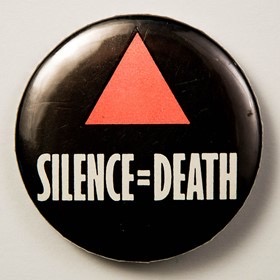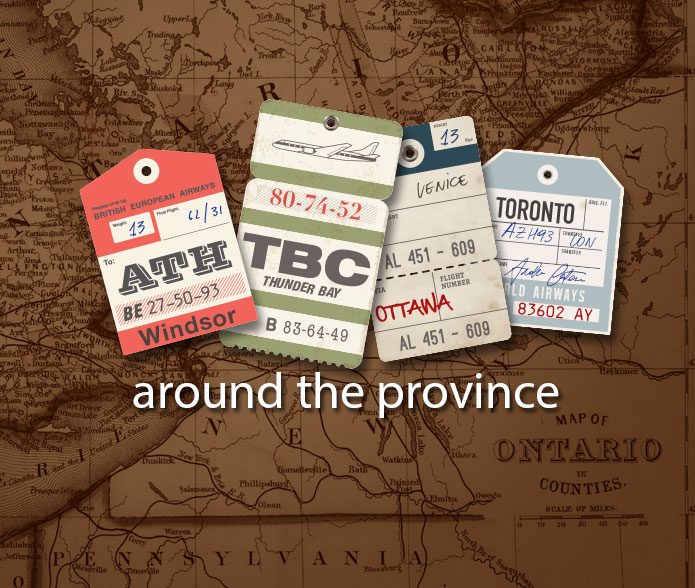Learn about a librarian’s research into 2SLGBTQ+ Libraries and Archives, preserving queer history, and current activism efforts.
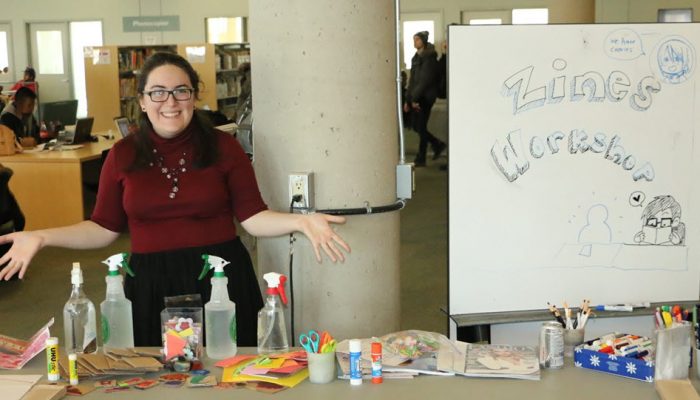
Making Space for Zines at Seneca Libraries
How it got started
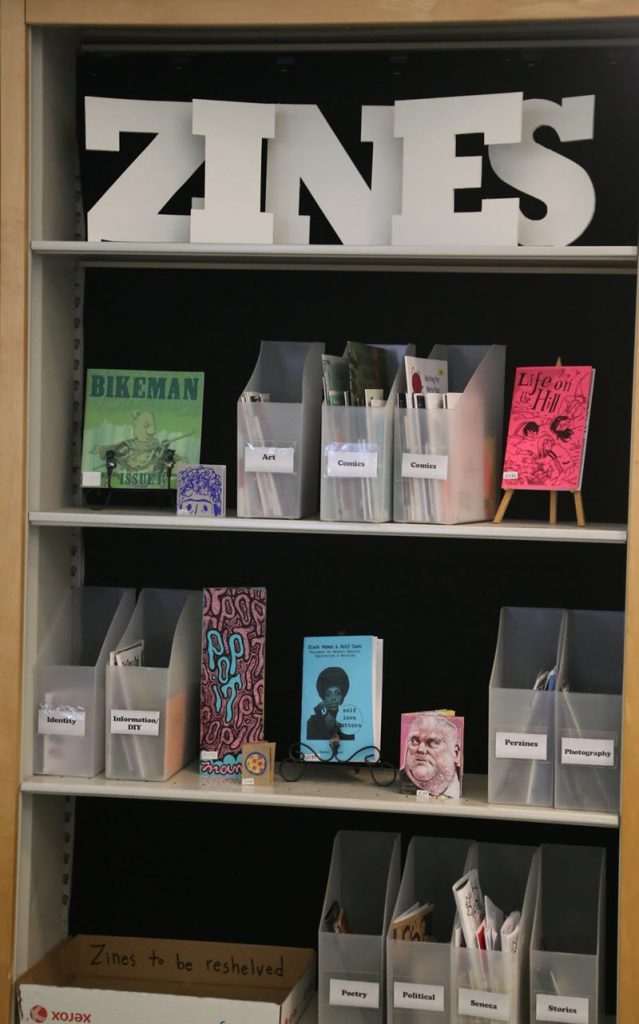
Photo credit: Joanna Blair
In the summer of 2015, the library was approached by two faculty members in Seneca’s Illustration Program about starting a zine collection at the Seneca@York Campus Library. They had been taking classes to visit the zine collection at OCADU and asked us, “why not at Seneca?” The faculty were excited by the possibility that zines created by their students could be part of the collection. This seemed like a win-win situation where student work could be showcased while the library built a collection that would be relevant to student needs and responsive to faculty requests.
Visiting OCADU
An important first step to establishing our own collection was to investigate existing zine collections and learn about best practices. A visit to OCADU’s Learning Zone was eye-opening as Learning Zone Librarian Marta Chudolinska and E-reserves Technician Lindsay Gibb treated us to a tour of their space and generously shared tips for curating and cataloguing a successful zine collection. Prepped with their advice and inspired by their collection, we were ready to start acquiring zines.
Collecting
In October 2015, with a budget of $300, we attended our very first CanZine festival in Toronto. Our mandate was to collect zines that covered diverse subjects and perspectives, and that were made using a variety of techniques and materials. After a full day of mingling with zinesters and learning about the world of zines, we left with a bag containing the first 44 zines of our collection. Including donations from OCADU and zines made by Seneca students, we would have 140 zines with which to launch our collection.
Space and security
It was important to our faculty partners that the zine display had visual appeal. We hung black fabric to help draw attention to the collection and to ‘frame’ the zines, and the Illustration students made a sign. We also tried to find the right balance of access and security as we have chosen not to RFID tag the zines. The collection is open and browseable but located behind the circulation desk. Students can access it without staff assistance but it looks secure because of the proximity to staff. Luckily, we have had no losses to date.
Online repository
Although the collection is primarily meant for browsing, we also wanted users to have a finding aid that would allow them to search for zines by author, subject, genre, and materials or techniques used. Accordingly, we decided to catalogue our zines using our digital repository software. We included a scanned image of each zine’s cover and descriptive metadata about each zine’s contents and origin. The repository is open to the public and can be viewed here. We also created a LibGuide to serve as another access point and as a promotional tool for our collection.
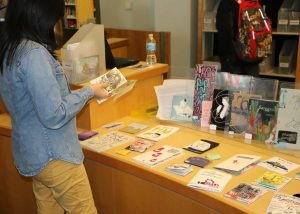
Photo credit: Pam Bolan
Promoting the collection
We used traditional channels to promote the zines including the library Twitter feed, campus-wide digital signage and the college-wide content management system. We also hosted a launch event and workshop led by the Illustration faculty. Our faculty partners were also interviewed by Quill and Quire and this provided additional exposure and Twitter traffic for our collection.
Successes and challenges
Success in this case has been realized by new connections to our stakeholders. The project and collection has provided the library with a connection point to students and faculty in the Illustration program and the School of Creative Arts and Animation that we never had before. We were even approached for the first time by the Arts Network Student Club to co-host another zine making workshop in the library in April and we couldn’t be more thrilled. We have had two scheduled class visits to examine the zine collection and several drop-in visits. We are optimistic that grassroots campus support will continue and the use of the collection will grow.
Joanna Blair is a Teaching and Learning Librarian at Seneca Libraries, Seneca@York campus. Joanna is currently serving as the Liaison for the Faculty of Communication, Art & Design. She can be reached at joanna.blair[at]senecacollege.ca.
Lydia Tsai is a Metadata Librarian at Seneca Libraries, Markham campus. She enjoys working with digital repositories and creating web content. She can be contacted at Lydia.Tsai[at]senecacollege.ca.
